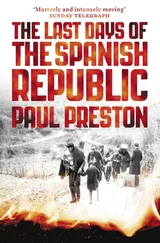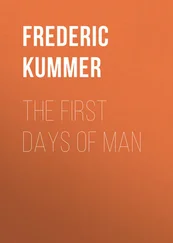Then and for many years afterwards, the wastelands and the scarred house fronts showed that soldiers fought, right here, in the middle of the city. The walls were still pitted with bullet holes from the Battle of Berlin in April 1945. Visitors to Tacheles didn’t need to know that the former shopping arcade and department store were used by the Deutsche Arbeitsfront (the Nazi-endorsed German Labour Front, which replaced independent trade unions) and by the SS, or that French prisoners of war toiled away up in the attics. Directly after the fall of the Wall, there was no need for tour guides or information panels to convey the history of Berlin-Mitte. The history of the twentieth century was written into the cityscape – all you had to do was look. ‘Now’ means all the experiences, memories and history present at a given moment in time.
Around noon on 13 February 1990 Leo Kondeyne, Clemens Wallrodt and their friends pull up in an old fire engine outside what remains of the former department store in the Oranienburger Strasse. The squatters climb onto the roof of their vehicle and in through a first-floor window. It is evident from the back of the building that the GDR’s demolition experts carried out their task with great precision. They blew up the majority of the sprawling complex around its central dome because the East German capital’s urban planners wanted to build a street here. The building was still in use in the 1970s. The squatters stand in the large empty space behind the building and stare up into open rooms that have been cut in half.
The complex was built by Franz Ahrens between 1907 and 1909 using reinforced concrete in the modern style. A glassroofed shopping arcade connected the large and still extant entrance arch on Oranienburger Strasse with Friedrichstrasse, and at its central point the arcade opened up into a dome. However, the idea of competing with the major department stores by linking a cluster of specialized shops to a centralized till system, thus making shopping easier, failed after only a year; the arcade-cum-department store closed down in 1914. In 1928 the building was acquired by the electrical company AEG, which renamed it Haus der Technik and exhibited its latest products in the spacious and luxurious showrooms. The first vacuum cleaners in Berlin were supposedly sold here.
In 1933 Nazi organizations began to occupy parts of the building. It was later damaged during Allied bombing raids on the capital of the Third Reich. The bomb damage report for 16 December 1943, filed by Berlin’s anti-air-raid headquarters, indicates that the Haus der Technik was hit during the 160th bombing raid. Two hundred and fifty planes had flown over the city at around 7:30 that evening. The building sustained further bomb damage in 1944.
After the founding of the German Democratic Republic, it was used by the Free German Trade Union Federation and the College of Foreign Trade. The Oranienburger Tor Lichtspiele, a picture house, opened in the building first, followed by the Studio Camera Berlin, the cinema of the state film archive. A branch of the Berlin savings bank and a lingerie shop also moved in. The large cellars were later flooded for structural reasons, and in the early 1980s demolition work commenced.
The squatters occupy the building prior to the first free East German parliamentary elections in March, its scheduled demolition in April and the East Berlin city council assembly elections in May 1990. Construction workers place dynamite into the blast holes by day, and at night the squatters fish it out again. The squatters name the building Tacheles after the free jazz combo of which some of them are members. They are based at Rosenthaler Strasse 68, known as the Eimer because the squatters apparently found buckets in every room. Its full name is I.M. Eimer, meaning literally ‘in the bucket’ or, more idiomatically, ‘shafted’. But I.M. also stands for ‘inoffizieller Mitarbeiter’ (‘informal collaborator’) – someone who was either forced to act as an informant for the Stasi, the East German secret service, or did so out of conviction.
The stand-alone building (there are empty plots on either side) was occupied on 17 January 1990, almost a month before Tacheles, by members of the East German bands Freygang, Ich-Funktion and Die Firma, and their mates. A flyer addressed to the ‘dear people’ of Mitte reads: ‘Since no one seems bothered by the disintegration of many buildings, we, a collective of three rock bands, have taken full responsibility for the house at Rosenthaler Strasse 68.’ They said they were appropriating the building out of ‘euphoria for the present moment’. They would insulate the building for sound and respect the interests of local residents. The squatters proclaimed the house an autonomous cultural centre and established an association called Operative Behavioural Art. Its logo is a giant ear mounted on the roof.
One of the starting points for the occupation of the Eimer was the house at Schönhauser Allee 5. It was home to Autonome Aktion Wydoks, one of whose leaders was Aljoscha Rompe. The stepson of Robert Rompe, the communist resistance fighter, plasma physicist and member of the central committee of the SED (the Socialist Unity Party that ruled East Germany throughout its existence), Aljoscha Rompe founded the GDR’s first official punk band. Feeling B toured the country for years. Concerts in the province were followed by parties, some lasting for days. Feeling B responded to people’s constant griping about scarcities in East Germany with out-and-out hedonism. It wasn’t their political lyrics that irked the authorities but their refusal to toe the line regarding socialism’s world-historical mission; they preferred to party and mess about. The lyrics of one of their tracks, ‘Graf Zahl’ (‘The Count of Numbers’), are a long list of numbers, starting at one and stopping only when the band feels the song has gone on long enough. Two of the members of Feeling B soon moved on to found Rammstein, who once performed at the Eimer before becoming an international synonym for gloomy German pop.
Aljoscha Rompe died in 2000 from an asthma attack in his camper van. An obituary had the following to say about Rompe’s role in the years after the fall of the Wall: ‘He held court at Schönhauser Allee 5 in Prenzlauer Berg, a house that was squatted before the Wende then quickly legalized through tenancy agreements, and came to illustrate in microcosm the Prenzlauer Berg scene’s attempt to conquer the West and its failure to do so. Thanks to Aljoscha, the Schönhauser Allee house became a hub for East Berlin left-wingers, with concerts in the courtyard, its own pirate radio station up in the attic, a cinema in the cellar and lots of drinking in makeshift bars with a shabby living-room charm. These good-time guerilleros had the cheek to tap into public funds and build a recording studio, and Autonome Aktion Wydoks fell only a few votes short of winning seats on the district council.’
Autonome Aktion Wydoks received 824 votes in the East Berlin local elections. The monthly membership fee was five marks, and the statutes said that anyone ‘not too flabby or floppy and able to withstand a constant barrage of at least 150 phons of music at our bar’ could join, according to the German news magazine Der Spiegel . Immediately after the Wende, while it was still a loose association of East German punks and not yet a party, the Aktion called for people to grab empty houses in East Berlin first before others got there.
The flyer announcing the occupation of the Eimer in Rosenthaler Strasse concluded with the words ‘From Wednesday, Berlin will be a cultural metropolis. People of the world, hear the signal!’ It was meant as a joke, but it was still accurate. The squatters chose buildings in strategic spots. One of the heartlands of this future cultural metropolis was in the old Spandauer Vorstadt, a former suburb between Tacheles and the Eimer diagonally bisected by two parallel streets – the neighbourhood’s main thoroughfare, Auguststrasse, and Linienstrasse. The Scheunenviertel (Barn Quarter), part of the Spandauer Vorstadt, and the Rosenthaler Vorstadt north of Torstrasse were also part of the new district of Mitte. Many artists were attracted to live and work there because there was ample room for ateliers and temporary art projects that either cost nothing, being squats, or were cheap by virtue of being available on temporary licence.
Читать дальше












